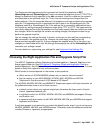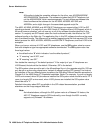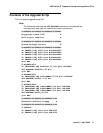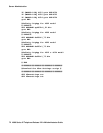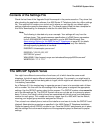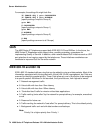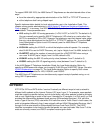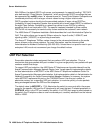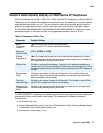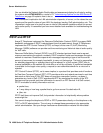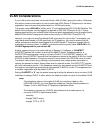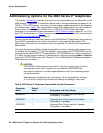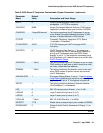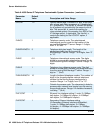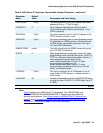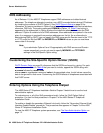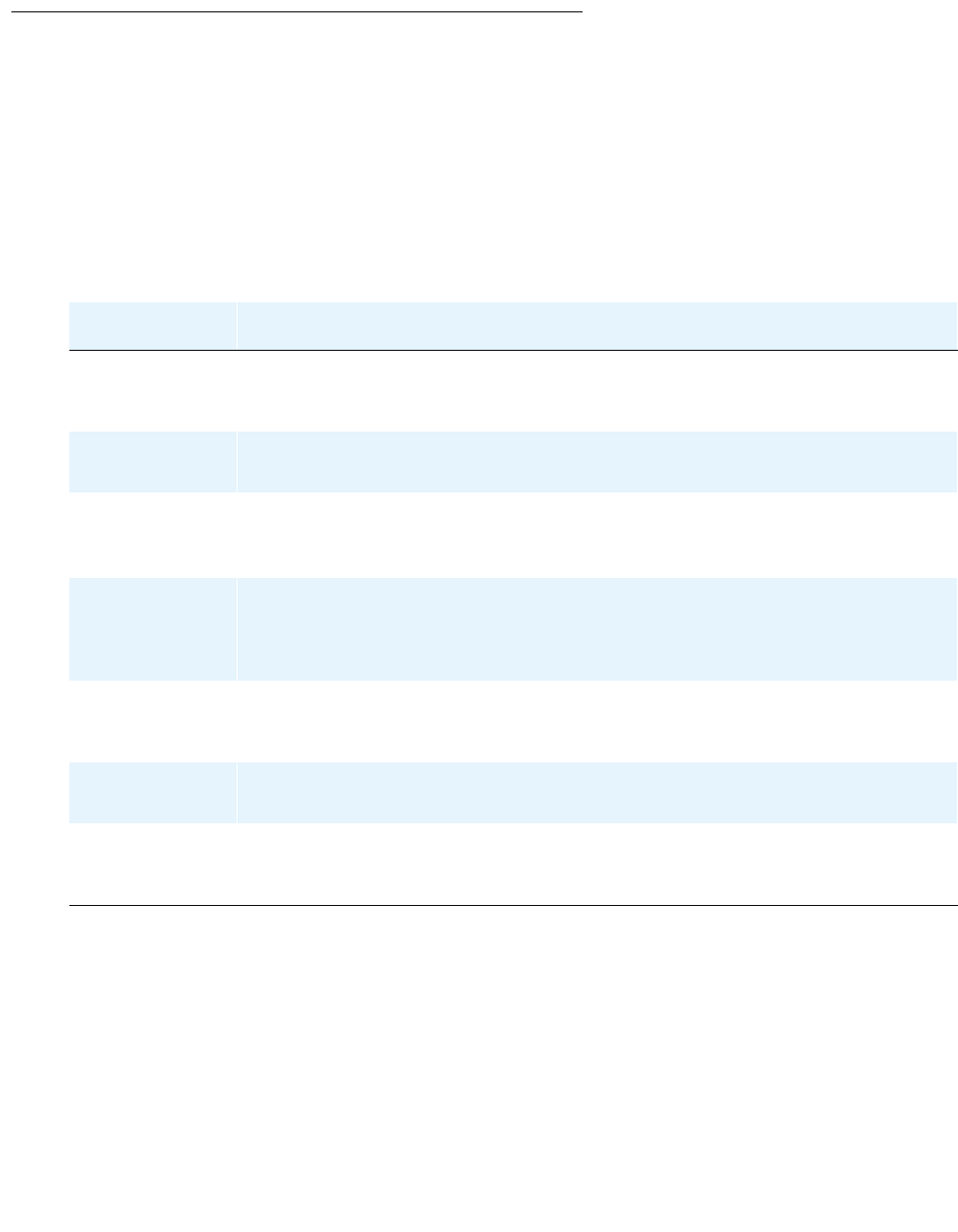
QoS
Issue 2.2 April 2005 77
Network Audio Quality Display on 4600 Series IP Telephones
With the exceptions of the 4601, 4606, 4612, 4624, and 4690 IP Telephones, all Series 4600 IP
Telephones are by default administered to allow the end user an opportunity to monitor network
audio performance while on a call. The user guides for each phone provide specific detail on
getting to the appropriate screen, what the end user sees, and what the information means.
For 4610SW/4620/4620SW/4621SW/4622SW/4625SW/4630/4630SW IP Telephones, these
parameters display in real-time to users on the appropriate screens, while on a call:
For 4602/4602SW IP Telephones, the Network Audio Quality Screen gives the user a qualitative
assessment of the current overall audio quality. This assessment is based on separate
evaluations of:
● the Packet Loss, and
● the total Network Delay, which is the sum of Packetization Delay, One-way Network Delay,
and Network Jitter Compensation Delay, and
● consideration of the codec in use.
Table 5: Parameters in Real-Time
Parameter Possible Values
Audio
Connection
Present?
Yes if a receive RTP stream was established.
No if a receive RTP stream was not established.
Received
Audio Coding
G.711, G.726A, or G.729.
Silence
Suppression
Yes if the telephone knows the far-end has silence suppression Enabled.
No if the telephone knows the far-end has silence suppression Disabled, or
the telephone does not know either way.
Packet Loss No data or a decimal percentage. Late and out-of-sequence packets are
counted as lost if they are discarded. Packets are not counted as lost until a
subsequent packet is received and the loss confirmed by the RTP sequence
number.
Packetization
Delay
No data or an integer number of milliseconds. The number reflects the
amount of delay in received audio packets, and includes any look-ahead
delay associated with the codec.
One-way
Network Delay
No data or an integer number of milliseconds. The number is one-half the
value RTCP computes for the round-trip delay.
Network Jitter
Compensation
Delay
No data or an integer number of milliseconds reporting the average delay
introduced by the telephone’s jitter buffer.



